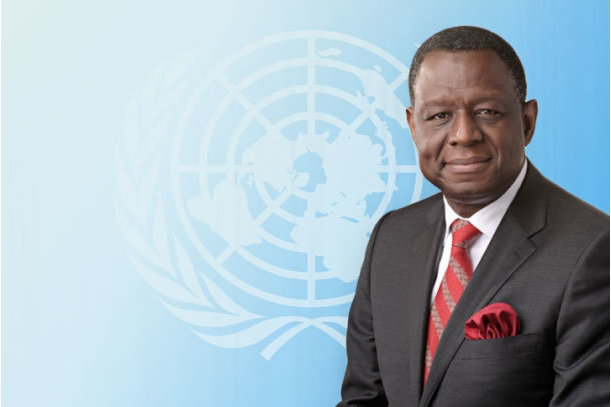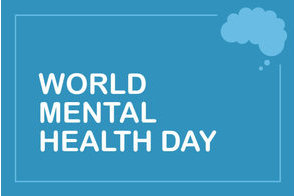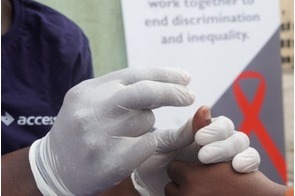Maternal mortality declined 44% in 25years

Summary
Maternal deaths have fallen from about 532,000 in 1990 to an estimated 303,000 this year.
United Nations agencies and the World Bank Group have reported that maternal deaths have fallen from about 532,000 in 1990 to an estimated 303,000 this year. According to a new report on progress made under the Millennium Development Goals (MDGs), the global institutions said this is the equivalent of 44% drop in maternal mortality around the world.
Maternal mortality, which is defined as the death of a woman during pregnancy, childbirth or within 6 weeks after birth, has fallen to an estimated global maternal mortality ratio (MMR) of 216 maternal deaths per 100 000 live births in 2015, down from 385 in 1990.
Assistant Director-General, Family, Women’s and Children’s Health of the World Health Organisation, Dr Flavia Bustreo, said despite the progress made by the MDGs over the past 25 years, more still needs to be done. According to Dr. Bustreo, “We know that we can virtually end these deaths by 2030 and this is what we are committing to work towards.”
Executive Director of United Nations Population Fund, Dr. Babatunde Osotimehin, said, achieving that goal will require much more effort.
“Many countries with high maternal death rates will make little progress, or will even fall behind, over the next 15 years if we don’t improve the current number of available midwives and other health workers with midwifery skills,” the UNFPA Executive Director said. “If we don’t make a big push now, in 2030 we’ll be faced, once again, with a missed target for reducing maternal deaths.”
But despite global improvements, the report, Trends in Maternal Mortality: 1990 to 2015 – Estimates by WHO, UNICEF, UNFPA, World Bank Group and the United Nations Population Division, says only nine countries achieved the MDG 5 target of reducing the maternal mortality ratio by at least 75% between 1990 and 2015. The countries are Bhutan, Cabo Verde, Cambodia, Iran, Lao People’s Democratic Republic, Maldives, Mongolia, Rwanda and Timor-Leste. However, the MMR in some of these countries still remains higher than the global average, the report says.
“As we have seen with all of the health-related MDGs, health system strengthening needs to be supplemented with attention to other issues to reduce maternal deaths,” said UNICEF Deputy Executive Director, Geeta Rao Gupta. “The education of women and girls, in particular the most marginalized, is key to their survival and that of their children. Education provides them with the knowledge to challenge traditional practices that endanger them and their children.”
In terms of regional improvement, the greatest improvement was recorded in Eastern Asia, where the maternal mortality ratio fell from approximately 95 to 27 per 100 000 live births (a reduction of 72%). In developed regions, maternal mortality fell 48% between 1990 and 2015, from 23 to 12 per 100 000 live births.
The UN agencies and the World Bank opines that ensuring access to high-quality health services during pregnancy and child birth is helping to save lives. Essential health interventions must include practicing good hygiene to reduce the risk of infection; injecting oxytocin immediately after childbirth to reduce the risk of severe bleeding; identifying and addressing potentially fatal conditions like pregnancy-induced hypertension; and ensuring access to sexual and reproductive health services and family planning for women.
A new Global Strategy for Women’s, Children’s and Adolescents’ Health, launched by the UN Secretary General in September 2015, aims to help achieve the ambitious target of reducing maternal deaths to fewer than 70 per 100 000 live births globally, as included in the Sustainable Development Goals (SDGs). The UN and the World Bank reckon that reaching that goal will require more than tripling the pace of progress – from the 2.3% annual improvement in MMR that was recorded between 1990 and 2015 to 7.5% per year beginning next year.
“The SDG goal of ending maternal deaths by 2030 is ambitious and achievable provided we redouble our efforts,” said Dr Tim Evans, Senior Director of Health, Nutrition and Population at the World Bank Group. “The recently launched Global Financing Facility in Support of Every Woman Every Child, which focuses on smarter, scaled and sustainable financing, will help countries deliver essential health services to women and children.”
The global organisations have called for better data collection efforts and accountability in order to help further improvement. According to them, maternal death audits and reviews also need to be implemented to understand why, where and when women die and what can be done to prevent similar deaths. Since 2012, WHO, UNFPA and partners have developed Maternal Death Surveillance and Response for identification and timely notification of all maternal deaths, followed by review of their causes and the best methods of prevention. An increasing number of low- and middle-income countries are now implementing this approach.
Related
-
World Mental Health Day 2019 focuses on suicide prevention
An estimated 20-30 per cent of Nigeria’s population is believed to suffer from mental disorders.
-
Curbing preventable deaths from HIV/AIDS in Nigeria
The current macroeconomic challenges notwithstanding, concerted efforts need to be made to strengthen the health and ...
-
China pledges to build 100 hospitals and clinics across Africa
China recently made a $5 million commitment to Gavi, the Vaccine Alliance.










